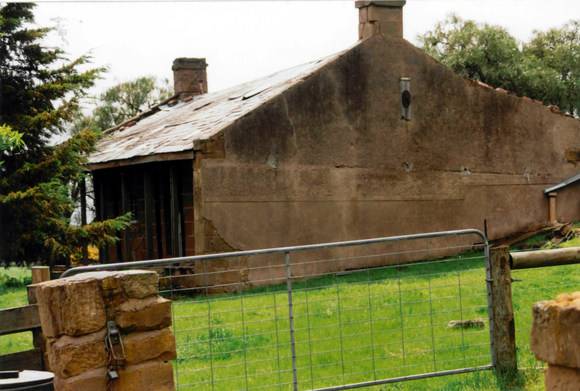| Back to search results » | Back to search page » |
|
Barwonside
Statement of Significance
What is Significant? How is it significant? Why is it significant? 'Barwonside' at 240 Gully Road, Ceres, has scientific significance as a representative example of Barrabool stone construction for a rural dwelling built in the 1850s in the Barrabool Hills, reflecting a common and distinctive building material for the period that is now rare (Criterion F).
'Barwonside',240 Gully Road, has significance as physical legacy of the original development of the Barrabool Hills for farming, agriculture and viticulture by Europeans from the mid 19th century. It is one of a distinctive number of similarly constructed dwellings that are peculiar to the area for their vernacular designs and siting within the Barrabool Hills landscape. Built in 1850-53 for Robert McDonald, a farmer from Northern Ireland, it was the location of his successful crop farm and one acre vineyard until his sold it to David Lamb in 1876. Members of the Lamb family farmed 'Barwonside' for over 100 years until 1978. While substantially deteriorated, the surviving significant Victorian vernacular fabric includes: symmetrical composition, single storey height, parapeted gable roof form (clad in slate), rear skillion wing (partially clad in galvanised sheet metal), front verandah, Barrabool stone wall construction, stone chimneys, centrally-located four panelled timber door, and the timber framed 12 paned double hung windows.
'Barwonside', 240 Gully Road, Ceres, is historically and scientifically significant at a LOCAL level.
'Barwonside' at 240 Gully Road has historical significance for its associations with the pioneering farming, agricultural and viticultural transformation of the Barrabool Hills by Europeans from the mid 19th century (Criterion A). Collectively, with other dwellings in the area of the period, it is a rare and endangered aspect of Victoria's pioneering history (Cirterion B). 'Barwonside' especially has associations with the Robert McDonald, Northern Irish farmer, and wife Margaret, and family, who built the dwelling between 1850-53 and established a successful crop farm and vineyard. McDonald contributed to the rural life of the Barrabool Hills during his tenure of the property, including his membership with the Barrabool Farmers' Society and as Secretary of the Moorabool Ploughing Match Committee. 'Barwonside' has a more enduring association with the Lamb family from 1876 until 1978. Successive generations of this family lived at and farmed the property throughout this period, beginning with David Lamb (between 1876 and 1883), John James Lamb (1883-1927) and Baden Lamb (1927-1978). The historical significance of 'Barwonside' is embodied in the surviving original fabric.
Group
Farming and Grazing
Category
Agriculture













